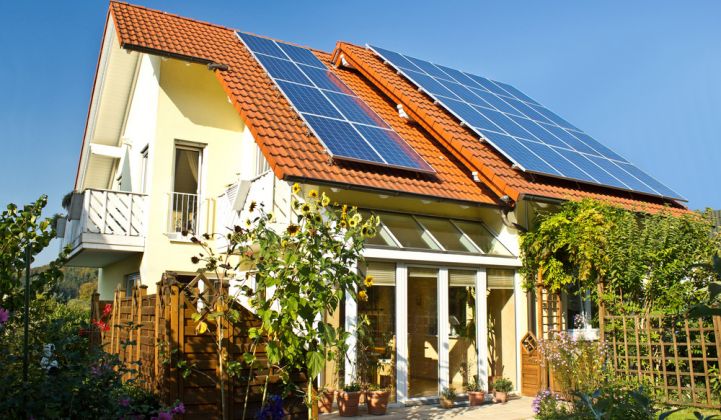Dividend Solar, SolarWorld and Enphase Energy are teaming up to bring rooftop solar to thousands of homeowners in South Carolina, a state with very little installed solar PV.
The three companies announced their partnership today as a part of a new Solarize South Carolina Program, which launched in Charleston and will roll out across the state this spring. As part of the initiative, the nonprofit marketing firm SmartPower will lead a grassroots campaign to get 2,000 homes to go solar over the next 18 months.
According to SmartPower, South Carolina currently has about 11 megawatts of solar projects, of all sizes, which is roughly enough to power 1,000 homes.
South Carolina is ripe for a solar boom, said Eric White, co-founder and president of Dividend Solar, the leading sponsor of the new Solarize initiative. In addition to benefiting from the falling costs of solar equipment, the state has great solar resources and recently passed legislation mandating a 2 percent renewable energy target by 2021, which has spurred developers into action. The main thing holding back South Carolina’s solar market is a lack of public awareness, White said.
“That’s one of the things Dividend Solar and SmartPower have set out to do -- we’re really going to open the door for communities to go solar,” said White. “And with SolarWorld and Enphase, we have high-quality American manufacturers to provide equipment for this initiative as well.”
“We’ve come together in a way that provides homeowners with a one-step solution that really helps make the process of [going] solar that much easier,” he said.
Dividend’s new “Solar Freedom” package combines its own zero-down EmpowerLoan with SolarWorld’s American-made panels and Enphase's market-leading microinverters. The partnership aims to help local installers rapidly deploy solar projects to meet the demands of the Solarize initiative.
“It’s all about driving efficiency, driving economies of scale and reducing the cost of solar, because that ultimately creates a win-win solution for everyone,” said White.
What’s interesting about Dividend’s push to accelerate solar deployment in South Carolina is that local utility South Carolina Electric & Gas (SCE&G) has also thrown its support behind the program.
“SCE&G is highly supportive of this initiative, which is a great sign for more widespread adoption of renewables…not just in the South, but all the way across the country,” said White.
While utilities and solar advocates are clashing over solar policies in some states, South Carolina has largely managed to get stakeholders to cooperate, at least for now.
Under South Carolina’s renewable portfolio standard passed last year, 1 percent of the 2 percent renewable energy goal must come from facilities sized between 1 megawatt and 10 megawatts. The remaining 1 percent is to come from facilities below 1 megawatt. As a result, utilities have an incentive to install a significant amount of solar, particularly small solar projects, in the coming years.
Dividend Solar has so far worked closely with SCE&G on the Solarize initiative, but is also hoping to engage with Duke Energy in order to reach more customers.
“We hear so many stories…about how utilities hate solar,” said Brian Keane, president of SmartPower. “That’s an interesting story, but that’s not altogether true, and it’s not true here in Charleston.”
Keane anticipates there is a huge pent-up demand for solar in South Carolina. And by working at the community level with local installers Sunstore and Alder Energy Systems, the group expects to bring a couple of megawatts of rooftop solar on-line in the coming months.
SmartPower has already led several successful solar campaigns, including in Connecticut, where more than 2.2 megawatts of solar were deployed across four communities over 20 weeks -- nearly tripling the amount of solar installed in those towns over the previous seven years.
“If you want to raise awareness about solar, you can do a lot of TV ads, but if you want people to buy solar, you have to have an on-the-ground campaign,” said Keane.
“Twenty percent of people who buy into the Solarize campaign never even considered going solar before,” he added. “We’re not just getting the low-hanging fruit, but everyone else.”
Dividend Solar launched its zero-down loan product last fall as a challenger to the dominant third-party ownership model. Dividend’s founders say their loan solution “walks, talks and looks like a lease,” but can offer customers significantly greater long-term economic value. Not only is the loan cheaper, but customers also earn equity and enjoy home value appreciation, said White.
Dividend Solar's loan also includes system operations and maintenance (O&M) through Next Phase Solar, which Enphase bought last month. White said this gives customers peace of mind that their system is performing well, which helps to ensure customers can make their loan payments on time.
"One of the big new trends in loans is the inclusion of monitoring and O&M services,” said GTM Research analyst Nicole Litvak. “Between the leasing companies moving into loans, like SolarCity and Sunnova, and the newer pure-play loan providers, like Dividend and Sungage, it's starting to look like including those services is becoming the norm."
The founders of Dividend call it “solar-ownership-as-a-service.”
“I think the market is heading down a path of ownership. We’re seeing it across the industry with historically lease- and PPA-focused financing providers beginning to develop loan products,” said White. “I think the age of the lease and PPA has probably plateaued at the 65 percent market share we saw in Q4 last year. I think you’ll see the loan model gain a pretty significant market share almost immediately.”



